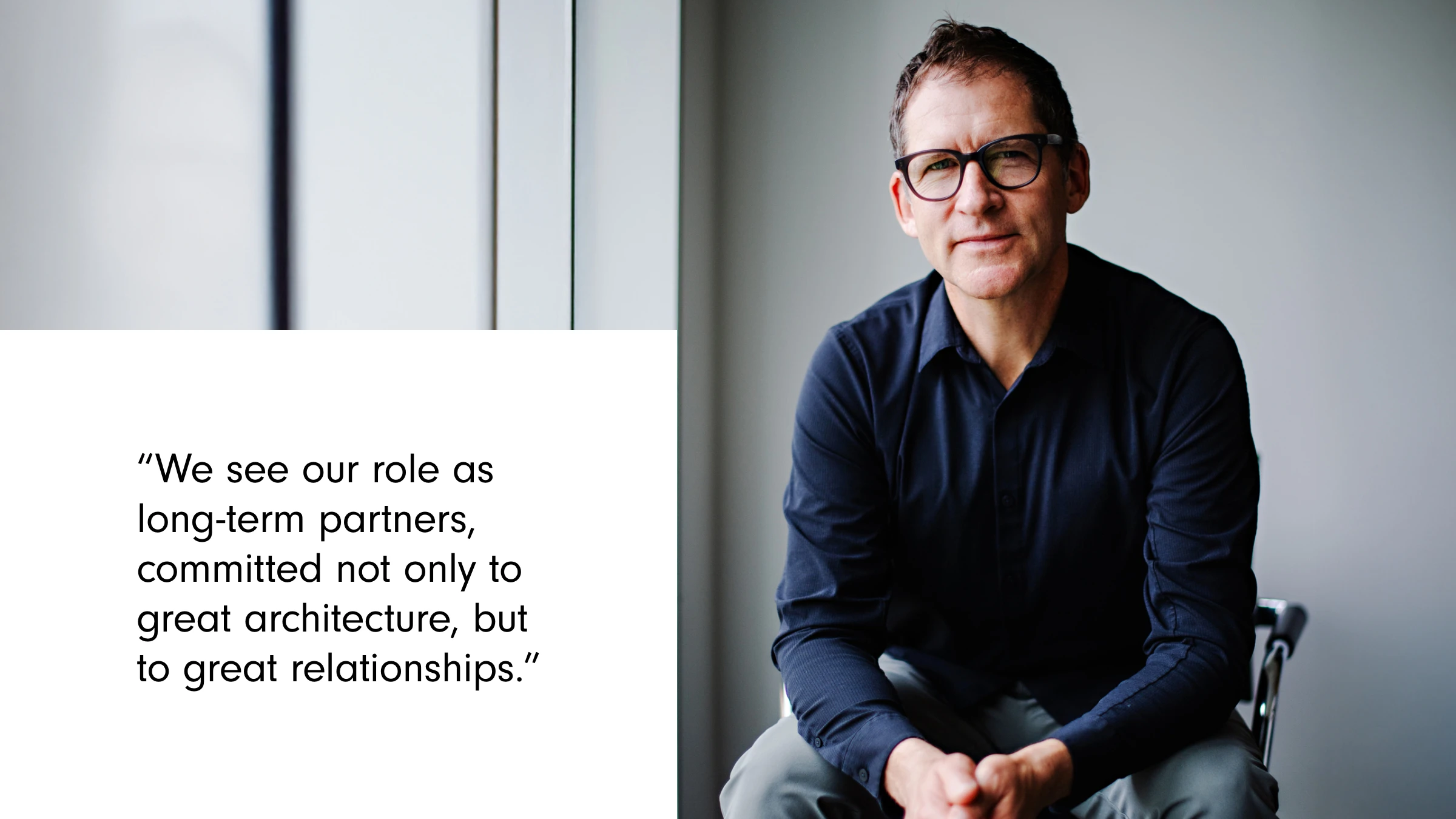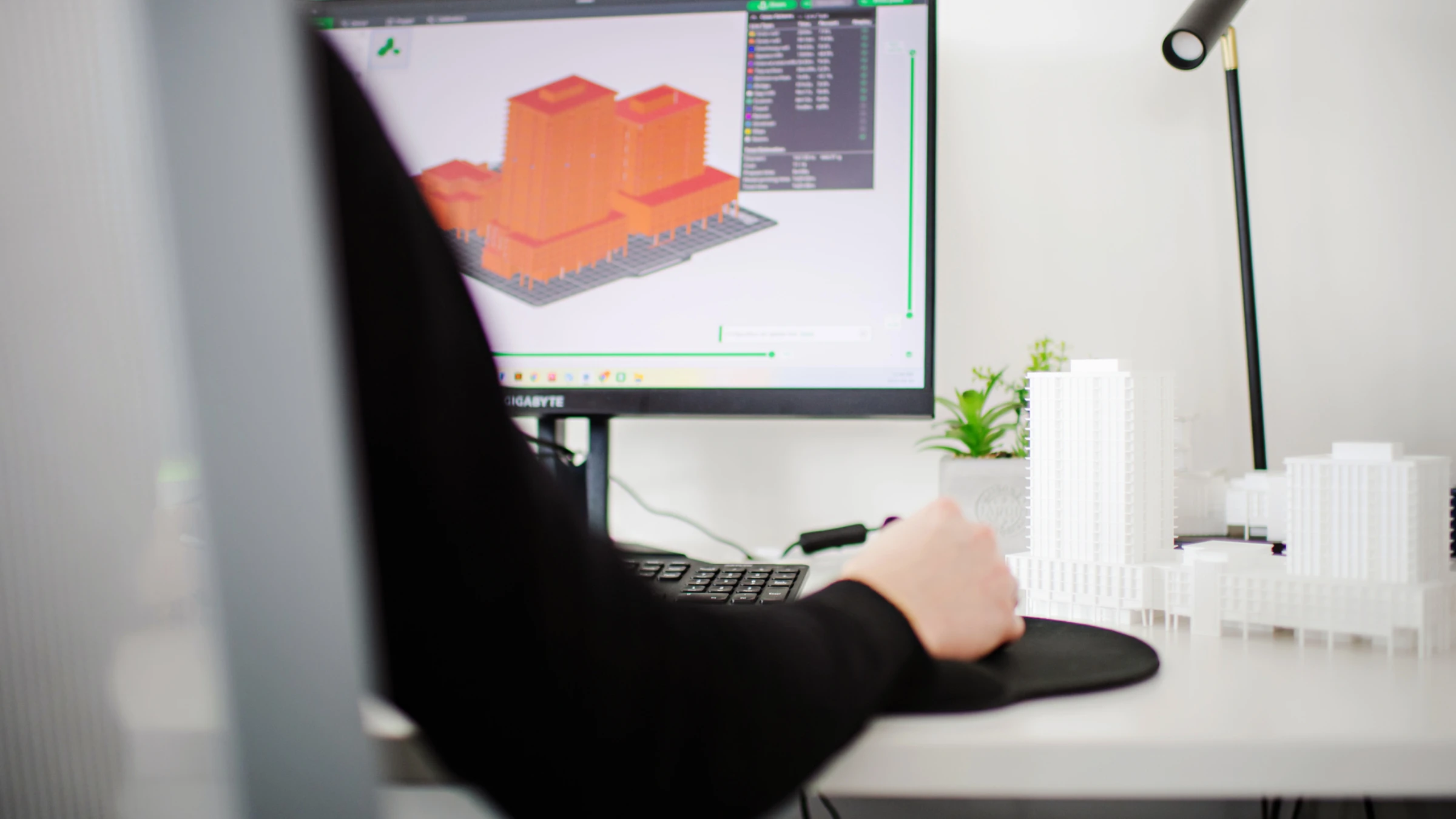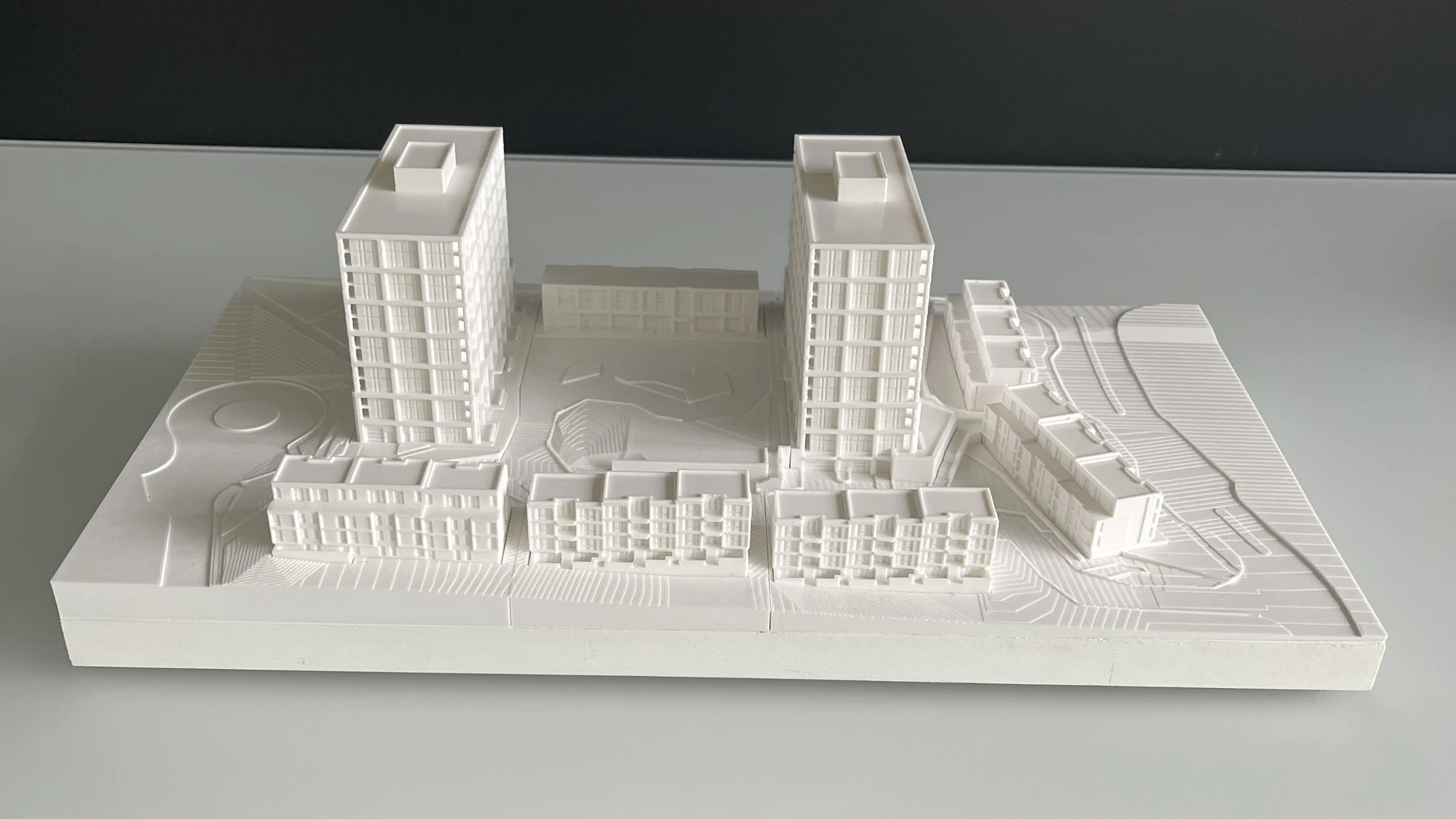
What Do Architects Do & Why You Need One
Learn what architects do and why hiring one adds value—from design and construction to functional, well-executed spaces. The right architect makes a difference.
Estimated Reading Time: 6 minutes
Welcome to part one of seven in our “What Do Architects Do” blog series.
Whether you're planning a new build, reimagining an existing space, or simply wondering what an architect brings to the table, you're in the right place. This series explores the many ways architects add value to a project.
In each article, we’ll share real-world insights from the MSS team—showing how our process and multidisciplinary expertise lead to smarter solutions, smoother builds, and spaces that truly work.
Because when it comes to getting the most out of your project, the right architect makes all the difference.
In this first segment, we’ll explore what architects do and why you need one. And what better place to start than by sitting down for a chat with Partner Jason Sweers?

Introduction: I’m Jason Sweers, Partner at Martin Simmons Sweers Architects (MSS). I guide project vision and delivery from early concept through to final occupancy, leading teams and client relationships to ensure every project benefits from our studio’s collective strengths. I also help foster our culture of accountability and collaboration to deliver lasting value.
Interviewer: What exactly does an architect do, and why should someone engage one?
Jason: An architect is your strategic partner throughout the entire building process—from shaping your vision and designing spaces to coordinating construction and ensuring everything comes together smoothly.
A great architect starts by listening—asking thoughtful questions to uncover not just what you want, but what you truly need. That understanding allows them to translate your goals into inspiring, efficient, and functional designs. They balance creativity with technical expertise, helping you turn ideas into practical solutions that fit your site, budget, and objectives.
Beyond drawings, an architect manages the design process, coordinates engineers and consultants, solves problems, and keeps your project on time and on budget. You may even be surprised to learn that they can also support your business goals by helping you align design decisions with your financial and strategic priorities.
When you hire an architect, you’re not just engaging a designer; you’re gaining a partner who helps you see the big picture—guiding every decision from concept through construction and beyond.
Interviewer: Why is it more expensive not to work with an architect?
Jason: Working with an architect is definitely an upfront investment, but not having one can end up costing you much more. We’ve seen it happen. In fact, we’re sometimes brought in mid-way through the design phase or even after construction has started. At that point, our job gets a lot more challenging. There’s only so much we can do once key decisions have already been made, especially if there are mistakes or missed opportunities due to ineffective planning early on.
Without that early guidance, projects can often run into avoidable issues such as important missed design opportunities, inefficient layouts, challenges with permits or building code, and construction mistakes that need fixing later. All of that can add up pretty quickly, sacrificing precious budget and taking away the peace of mind that the decisions being made now for the project will support its long-term success.
Architects are there to help clients think things through, bring in the right experts at the right time, and, with detailed planning, avoid challenges and costly mistakes.
And then there’s the long-term value. A well-designed building just performs better—it’s more efficient, more comfortable, and often more valuable over time. So while skipping the architect might seem like a way to save money at first, it often leads to more headaches and higher costs down the road.
Interviewer: How can an architect use technology, creativity, and problem-solving to navigate complex design challenges and deliver successful architectural outcomes?
Jason: At MSS, architecture is both a service and a creative discipline. We begin by listening—really understanding the client’s values, constraints, and goals. From there, we lead a structured yet adaptable process: feasibility analysis, concept design, regulatory navigation, detailed documentation, and construction administration. We’re problem solvers and facilitators who bring clarity to complexity. The goal is always the same: create spaces that elevate people and communities.
A great example of our problem-solving approach is a recent adaptive reuse project. The client envisioned transforming a five-storey, split-face stone building into an event space with offices, a reception area, a commercial kitchen, and more—but couldn’t quite make the pieces fit. We started by recommending a 3D scan to create a Revit model, allowing us—and the client—to better understand the building’s spatial constraints.
For instance, the client wanted three elevators between floors. But in a building from the early 1900s, interior columns don’t always align from floor to floor, which is critical when you’re planning vertical movement. We would simplify the Revit model in a “block and stack” manner, breaking the space down into elements. Then we play with these elements until we come up with a solution that’s going to work for their vision. Our visualization tools help clients reimagine their building assets, virtually test operations, and refine plans before construction begins.

We’re also exploring AI as a planning tool. While it won’t replace the creativity of architects, it helps us iterate faster. For example, we’re using AI to test materials, layouts, and finishes based on our Revit or 3D-generated models. This compresses planning time and allows us to focus our creative energy on design. The result is better design outcomes, faster, with less cost to the client.
Interviewer: How can architects guide clients through complex projects—balancing feasibility, technical execution, and stakeholder engagement—to deliver successful outcomes?
Jason: Early in a project, we help clients understand what is possible and what is viable. Through feasibility studies and early concept development, we test options against zoning, budgets, and program goals—helping clients make informed decisions.
As the project develops, we bring technical rigour—ensuring the design meets code, works with building materials and structures, and can be built efficiently. We coordinate consultants and manage engagement from stakeholders like business owners and developers, including approvals and community feedback.
In the previous example of the adaptive reuse project, there’s also a heritage element to the building. The surrounding community loves the building. Using a 3D model also helps capture the spirit of the project and builds support for it. We’re often brought into a municipal meeting or to talk to a heritage committee to communicate how we’re preserving heritage values and working to reinvigorate a building and prolong its life in the community.
Our experience in the construction phase ensures the design intent is realized and the execution is controlled. We work with contractors, consultants, and owners to address issues quickly, minimizing risk and maintaining momentum.
Interviewer: How can architects support financial viability and risk management through thoughtful design and project planning?
Jason: At MSS, we embed value management into every phase of a project. Our design process includes continuous cost evaluation and collaboration with quality surveyors, builders, and engineers. Architects are often brought in during the due diligence phase—like in the 414 Westhaven project, a 13-storey residential tower.

Early on, we coordinated with consultants to analyze soils, water table, and grid capacity, ensuring proposed solutions were physically and financially viable. We also assessed site capacity against zoning and official plans, and considered the project’s urban design impact, including context sensitivity—such as low-rise neighbours to the north and south and commercial uses nearby.
We worked with the owner to determine how many units the building could support. The developers knew exactly what revenue stream would support the cost of construction. They had a clear financial model and knew what was required for profitability. Initially, they planned for 12 storeys. But by optimizing floor-to-floor height, we added a 13th storey—gaining 26 additional units per tower. Something many people don’t realize is how much architecture is actually rooted in business.
Architects are hired not only to design and plan a build, but also to contribute to the construction and operational aspects of the project. We ensure that project decisions are informed by real-time budget feedback, so quality isn’t compromised, and surprises are minimized. By developing well-coordinated, accurate construction documents, we also reduce the risk of delays, change orders, and litigation.

Interviewer: How can a collaborative process and in-house expertise elevate a project beyond traditional architectural approaches?
Jason: Our practice is rooted in the belief that collaboration produces better outcomes. We engage clients, stakeholders, and consultants early and meaningfully. Internally, we build teams of architects, interior designers, technologists, and project managers whose expertise is tailored to each project to achieve the highest level of success.
This is especially powerful in restoration projects, where we’re working with existing spaces rather than starting fresh. It pushes us to be more creative—figuring out what to keep, what to adapt, and how to make it all work. The constraints of a building often lead to more dynamic, inventive outcomes.
This integrated model allows us to respond with agility and depth across project types—from heritage restorations and civic buildings to advanced workplace, residential, and educational environments. Our in-house expertise in both architecture and interior design means we can deliver cohesive, holistic solutions with a shared vision. Our clients value our clarity, responsiveness, and ability to balance design ambition with practical execution.
Interviewer: What makes MSS a trusted and long-term architectural partner for clients and communities alike?
Jason: We structure our projects with clarity and transparency, ensuring roles, timelines, and expectations are well defined. As the project progresses, we remain a steady and accountable partner, guiding clients through each phase and proactively resolving issues. What sets MSS apart is the consistency with which we deliver thoughtful, well-built work that reflects both vision and values.
We see our role as long-term partners, committed not only to great architecture but also to building and maintaining strong relationships. Even though we’re based in the Kitchener-Waterloo region and often compete with larger Toronto firms, we understand that no matter the industry, relationships matter. Owners know that their success reflects on us—and we take that seriously. We care deeply about our projects, our partners, and the communities we build for.
Interviewer: For those looking to learn more about what architects do and how to choose the right one, are there any resources you'd recommend?
Jason: The OAA and RAIC offer some excellent resources such as:
- Ontario Association of Architects (OAA) - In Ontario, architects are licensed professionals responsible for the planning, design, and oversight of building construction and alterations. Their role is governed by the Architects Act and regulated by the OAA
- Royal Architectural Institute of Canada (RAIC)
Have more questions or thoughts? Connect with Jason Sweers here to continue the conversation.
Stay Tuned for Part 2
In the next installment of our series, we’ll chat with Senior Interior Designer Kourtney Rapp, about “What Do Architects Do When They Work with Interior Designers?”
*The information provided in this series is for educational purposes only and is not intended as professional advice. For guidance specific to your project, please consult a licensed architect or other qualified professional.
Want to be the first to know about new blog articles? Follow us on LinkedIn or Instagram.




